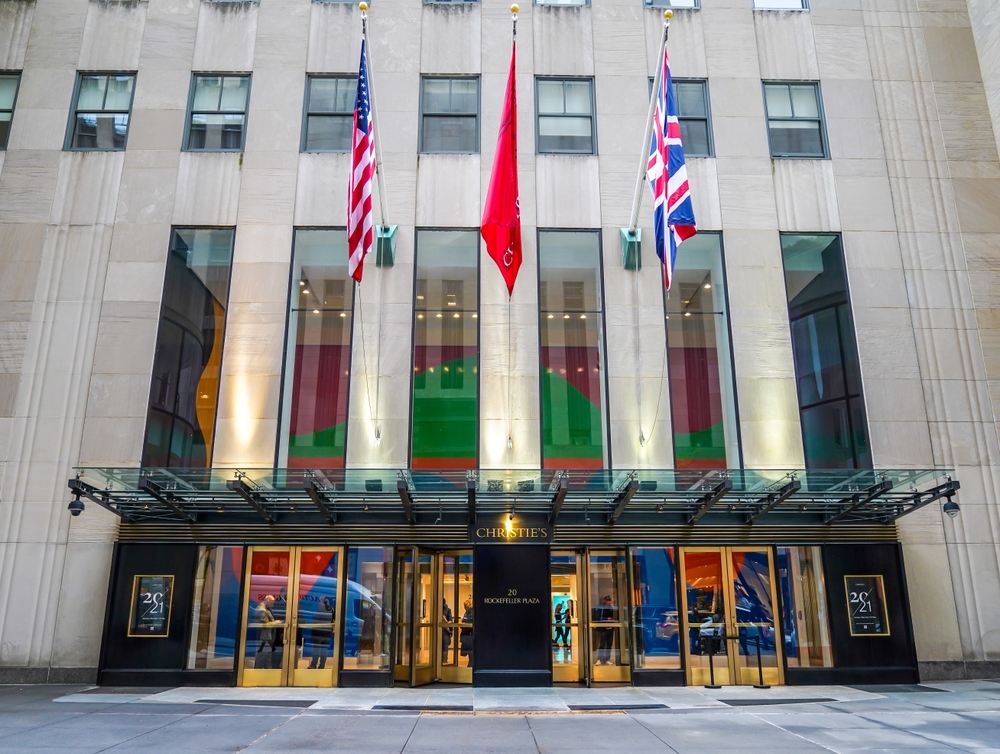Amazon Could Be Worth US$3 Trillion in Three Years, Analyst Says
Amazon is going to get bigger—maybe a lot bigger.
In a research note on Tuesday, Jefferies analyst Brent Thill lays out a case that Amazon (Ticker: AMZN) can reach US$5,700 a share over the next three years, a potential 70% gain that would boost the company’s valuation to nearly US$3 trillion.
Thill, who maintains a Buy rating on Amazon shares with a current price target of $4,000, notes that the stock has been stuck in neutral since last August, but thinks the stock will outperform again when the market gets clarity on the direction of the core retail business. He cautions that overall revenue growth will be a key driver of stock performance and that the shares could be range-bound until moving past what he warns will be a tough June quarter comparison. But for the long haul, he’s all in.
The analyst asserts that Amazon Web Services is the company’s most valuable business, and one that is well-positioned for further strong growth. He thinks AWS could be worth $1.2 trillion in three years, as more corporate computing workloads shift to the cloud. (Barron’s notes there are only four companies with market caps higher than that: Amazon itself, Apple, Microsoft and Alphabet.)
In a finding that could surprise some investors, Thill thinks the company’s advertising business could be worth more than $600 billion in three years. “As Amazon becomes an increasingly important channel for [consumer-packaged goods] companies, we believe a portion of their spending will shift toward search and product placement,” he writes. “In addition, we think Amazon has the opportunity to expand advertising further in international and new channels like Prime Video.”
As for the core retail business, the analyst estimates the value three years out at US$1 trillion, about US$700 billion of that for the third-party seller business. “[Amazon] Prime adoption and a broader shift to e-commerce have driven an acceleration in growth,” he writes. “We believe the length of the pandemic has served to engrain consumers’ increased reliance on e-commerce.”
Thill is careful to say that his sum-of-the-parts analysis is simply illustrative and doesn’t reflect his official price target. But he adds that viewing Amazon over a longer time period “helps provide perspective in the face of near-term disruptions/volatility from the pandemic.” He also thinks Amazon’s discount to its underlying asset value can narrow over time. And Thill points out that he is not including any value for its new healthcare business, which he notes is addressing a $350 billion U.S. market.
Amazon closed Tuesday at US$3,399.92, up 0.6%.
Reprinted by permission of Barron’s. Copyright 2021 Dow Jones & Company. Inc. All Rights Reserved Worldwide. Original date of publication: April 13, 2021.
 Copyright 2020, Dow Jones & Company, Inc. All Rights Reserved Worldwide. LEARN MORE
Copyright 2020, Dow Jones & Company, Inc. All Rights Reserved Worldwide. LEARN MORE
This stylish family home combines a classic palette and finishes with a flexible floorplan
Just 55 minutes from Sydney, make this your creative getaway located in the majestic Hawkesbury region.
A new report on the impact of cost of living pressures reveals a stark contrast between age groups in investment strategies
Four in five Australians say they have changed their investment and savings goals over the past 12 months, with 44 percent doing so primarily to make ends meet during the cost–of–living crisis. A further 25 percent say they’ve switched strategies to protect their wealth against inflation, according to a new survey by financial advisory firm, Findex.
The Superannuation and Retirement Insights report shows Australians have also changed their goals to grow their wealth (31 percent), to create a regular income stream (29 percent) and to reduce taxes (17 percent). Transferring wealth to their children or other family members has motivated 10 percent of Australians to alter their investment plans, which is likely reflective of the increasing role played by the Bank of Mum and Dad in young people’s first home purchases.
The report found that traditional investment avenues, such as property and superannuation, remain the most popular choices, with more than eight out of 10 survey respondents ranking these asset classes highly. But there is also an increasing inclination towards investments that offer the potential for quicker returns, additional perceived safety, and better liquidity or accessibility to funds.
Eighty percent of survey respondents also nominated bank savings as among their top five investment choices right now, followed by shares (66 percent) and cash (51 percent).
“This shift reflects a broader strategy to mitigate current financial uncertainties, balancing the pursuit of long-term wealth accumulation with the need for immediate financial security,” the report says.
While superannuation is considered a cornerstone investment for retirement and long-term wealth accumulation, 85 percent of Australians are exploring investments outside superannuation. The most common investments outside super are bank savings (64 percent), property (38 percent), cash (35 percent) and shares (34 percent).
However, when the data is broken down by generation, stark differences are revealed in how each age cohort chooses to invest their spare income and why.
Most popular investments outsider super and the motivations to invest by generation
Baby Boomers (born 1965-1964)
Outside superannuation, Baby Boomers prefer to invest in bank savings (60 percent), property (50 percent) and shares (46 percent).
By far, their primary motivation for investing is planning for retirement (80 percent). They also want to build wealth (51 percent) and support their children or other family members (25 percent). Other motivations include preserving wealth to beat inflation (22 percent) and paying off a mortgage or other debt (20 percent). They are the least likely generation to be saving for an investment property.
Gen Xers (born 1965–1980)
Gex Xers prefer to invest in bank savings (57 percent), property (43 percent) and shares (36 percent).
They are motivated to invest for retirement (66 percent), to build wealth (50 percent), to save for emergencies (36 percent), and to pay off a mortgage or other debt (30 percent). Interestingly, Gen X is the generation most concerned with supporting their children or family members (33 percent). This may be because Gen Xers have grown up during Australia’s long-standing property boom that began in the late 1990s and continues today.
Millennials (born 1981-1996)
Millennials have the strongest interest in bank savings as an investment avenue (70 percent), followed by property at 41 percent. They also like cash (35 percent) and shares (33 percent). Millennials have the highest uptake of exchange-traded funds (ETFs) at 21 percent. ETFs are a relatively new type of asset class, with the first ones trading on the ASX in 2001. ETFs are a basket of shares that can be purchased in a single transaction for instant diversification. Millennials are also the generation most interested in cryptocurrencies, with 22 percent invested.
Their biggest motivations for investing are to build wealth (55 percent), save for emergencies (50 percent) and plan for retirement (49 percent). They also want to support their kids (32 percent) and pay off their mortgage (32 percent). Millennials are the generation most likely to be saving for an investment property (28 percent) rather than a first home (17 percent).
Gen Zs (born 1997-2009)
Gen Zs spread their money across more asset classes than their elders. They like investing in bank savings (66 percent), cash (42 percent), shares (22 percent), ETFs (17 percent), property (14 percent) and cryptocurrencies (13 percent).
While Gen Zs are the youngest age cohort within the survey, they also have long-term goals just like their elders. The biggest motivation to invest among Gen Zs is to build wealth (52 percent). More Gen Zs are saving for a first home than any other generation, with 42 percent pursuing this goal. They are also the generation most concerned with preserving wealth to beat inflation (29 percent). Gen Zs also want short-term security, with 46 percent saving for emergencies. They’re also the generation most likely to be saving for other major purchases like a car or holiday (41 percent) and investing just for enjoyment (26 percent).
Just 55 minutes from Sydney, make this your creative getaway located in the majestic Hawkesbury region.
Consumers are going to gravitate toward applications powered by the buzzy new technology, analyst Michael Wolf predicts























